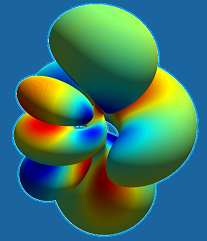List of lectures:
- Quantum Phase Transitions in Finite Systems (Pavel Cejnar)
- Laser Experiments in Atomic Physics (Miroslav Krůs)
- Resonances and Non-Hermitian Singularities in Nature (Nimrod Moiseyev)
- Nonhermitian Scattering Theory (Milan Šindelka)
- Electroweak Interactions in Atomic Spectroscopy (Jaroslav Zamastil)
Annotation of lectures:
Quantum phase transitions in finite systems
Pavel Cejnar
Institute of Particle and Nuclear Physics, Faculty of Mathematics and
Physics, Charles University, Prague, Czech Republic, cejnar@ipnp.troja.mff.cuni.cz
The course will be focused on various aspects of quantum phase
transitions (QPTs) and related quantum critical phenomena in bound
many-body systems, particularly the systems with a finite number of
effective degrees of freedom corresponding to some collective modes of
motions.
The QPT represents a non-analytic (“sudden”) change of the system’s
ground-state energy and structure, driven by a variable non-thermal
control parameter (such as an external field intensity or an internal
coupling strength). Examples of QPTs in several bosonic and fermionic
many-body models based on finite dynamic algebras will be
demonstrated, and some experimental evidence of QPTs in the framework
of quantum optics and nuclear physics will be outlined. The topics
that will be further addressed include: comparison of QPTs with
thermal phase transitions, relation of QPTs to avoided level crossings
and consequences for adiabatically driven systems, links of QPTs to
non-Hermitian degeneracies of the spectrum (exceptional points), and
consequences for entanglement properties of the system.
The ground-state QPTs will then be generalized to so-called
excited-state quantum phase transitions (ESQPTs). These represent
singularities in the density and flow of the quantized energy spectrum
in the plane “excitation energy versus control parameter” along the
lines that issue from the critical points of the ground-state QPTs.
Laser experiments in atomic physics
Miroslav Krůs
Institute of Plasma Physics, Academy of Sciences of the Czech Republic, Za Slovankou 1782/3,
18200 Prague 8, Czech Republic, krus@ipp.cas.cz
This lecture will introduce the laser-based experimental techniques used in studying low-energy electroweak interactions and in the search for exceptional points (EPs) in non-Hermitian quantum physics. The first part of the course will focus on fundamentals of the laser physics and technology, including OPCPA and few-cycle lasers; furthermore, the generation of of high-order harmonic frequencies will be introduced as well. The second part will aim at detection techniques, detectors, and the typical experimental setups used in the search of fingerprints of the electroweak interaction in atoms and molecules, and in exploring the fingerprints of EPs.
Resonances and Non-Hermitian Singularities in Nature
Nimrod Moiseyev
Schulich Faculty of Chemistry and Department of Physics, Technion - Israel Institute of Technology, Haifa, 32000, Israel, nimrod@technion.ac.il
Basic concepts of nonhermitian quantum mechanics will be
introduced, and their theoretical & computational advantages
relevant to atomic/molecular/optical physics (AMOP) will be
highlighted. In particular, scattering resonances will be
identified with poles of the S-matrix in the complex energy
plane. It will be shown then how can the resonance phenomenon
be studied numerically in concrete systems, via employing
adequately generalized computational methods developed
originally for the bound states. Subsequently, the
nonhermitian singularities (the so called exceptional points)
will be described, and their physically observable
fingerprints will be discussed.
[1] N. Moiseyev, Non-Hermitian Quantum Mechanics, Cambridge University Press (2011).
Nonhermitian Scattering Theory
Milan Šindelka
Institute of Plasma Physics, Academy of Sciences of the Czech Republic, Za Slovankou 1782/3,
18200 Prague 8, Czech Republic, sindelka@ipp.cas.cz
Nonhermitian scattering theory will be introduced, based upon the Siegert pseudostate formalism developed by Tolstikhin (see the seminal article [1] and followup papers). An equivalence of this nonhermitian approach with the standard hermitian scattering theory will be demonstrated. Conceptual advantages of the nonhermitian (Siegert based) mode of description will be highlighted. The Siegert pseudostate method will be then illustrated explicitly on the case of 1D scattering. We shall focus in particular on the calculation of transmission probability for a quantum particle penetrating through a potential barrier. Finally, some open as yet unsolved conceptual problems in nonhermitian scattering theory will be listed and discussed.
[1] Oleg I. Tolstikhin, Phys. Rev. A, 74, 042719 (2006).
Electroweak Interactions in Atomic Spectroscopy
Jaroslav Zamastil
Department of Chemical Physics and Optics, Faculty of Mathematics and Physics, Charles University, Ke Karlovu 3, 121 16 Prague 2, Czech Republic, zamastil@karlov.mff.cuni.cz
First, the current state of fundamental physics will be
shortly reviewed and motivation for high-precision
low-energy tests of the current theory of electroweak
interactions will be given. Starting with quantization
of Dirac field, we then explain the part of the theory
necessary for understanding low-energy manifestation
of the electroweak interactions. Finally, the detection
of electroweak interactions by atomic spectroscopy,
namely optical rotation and Stark interference
experiments, will be described in some detail.

